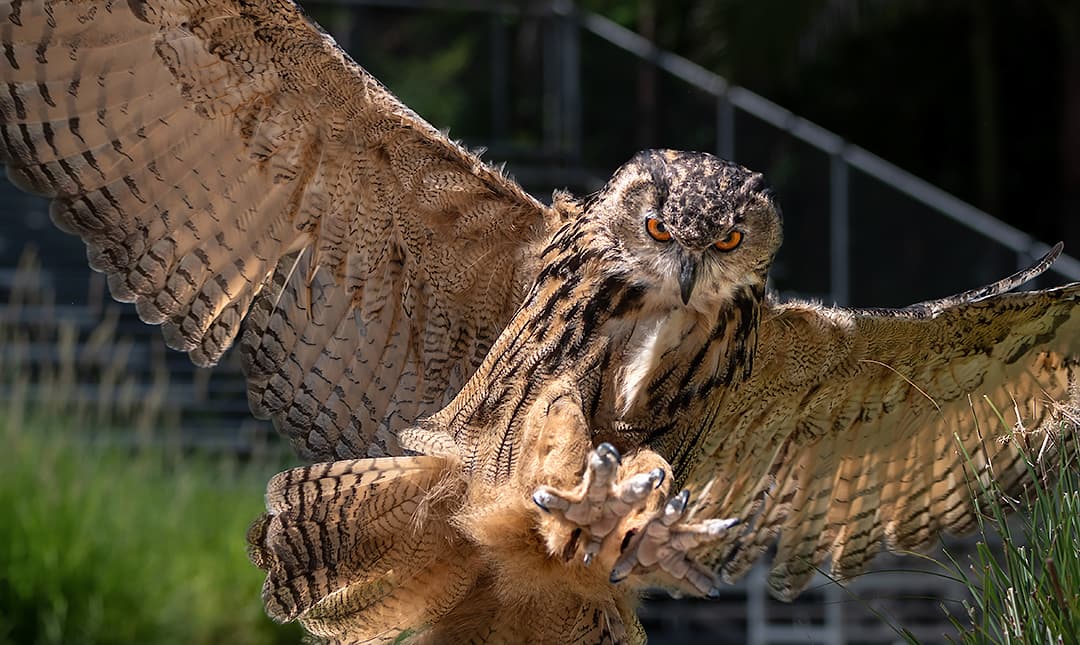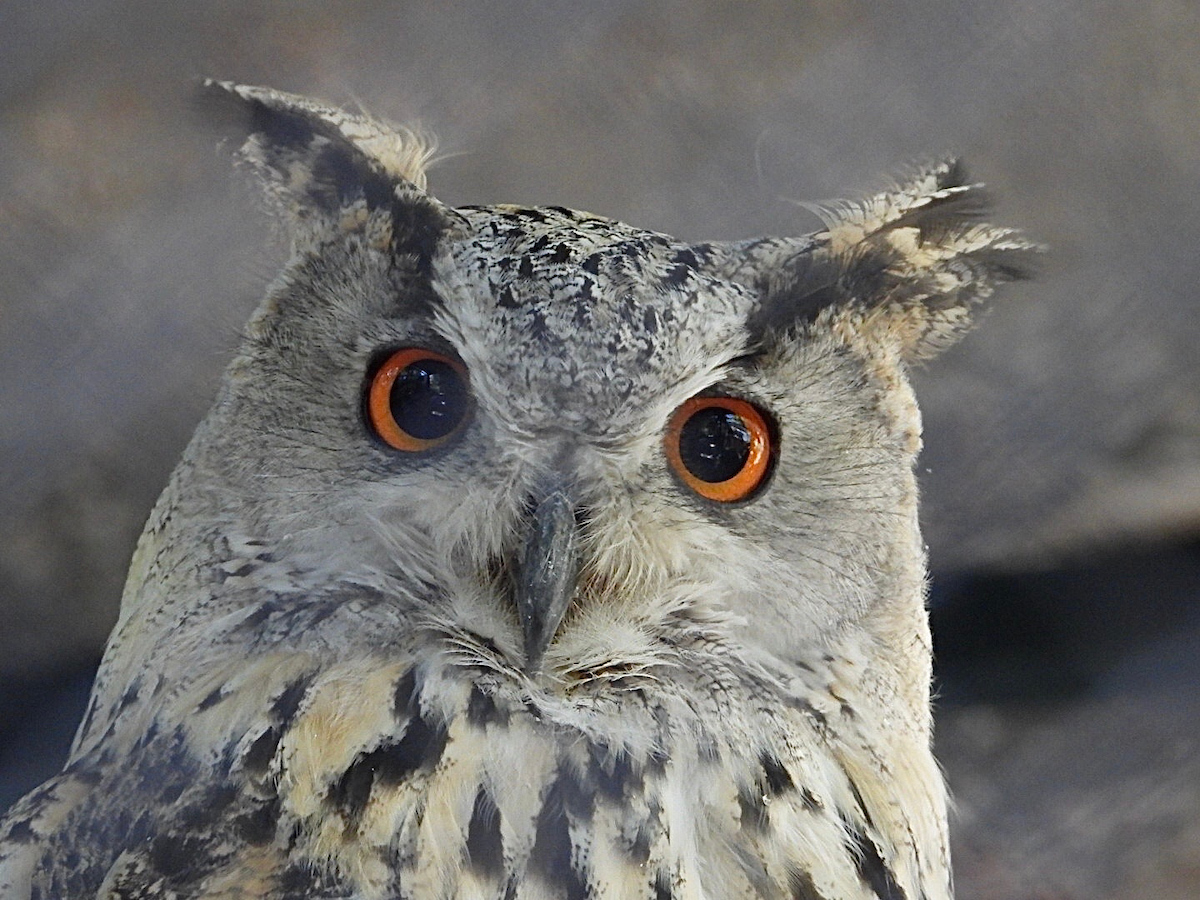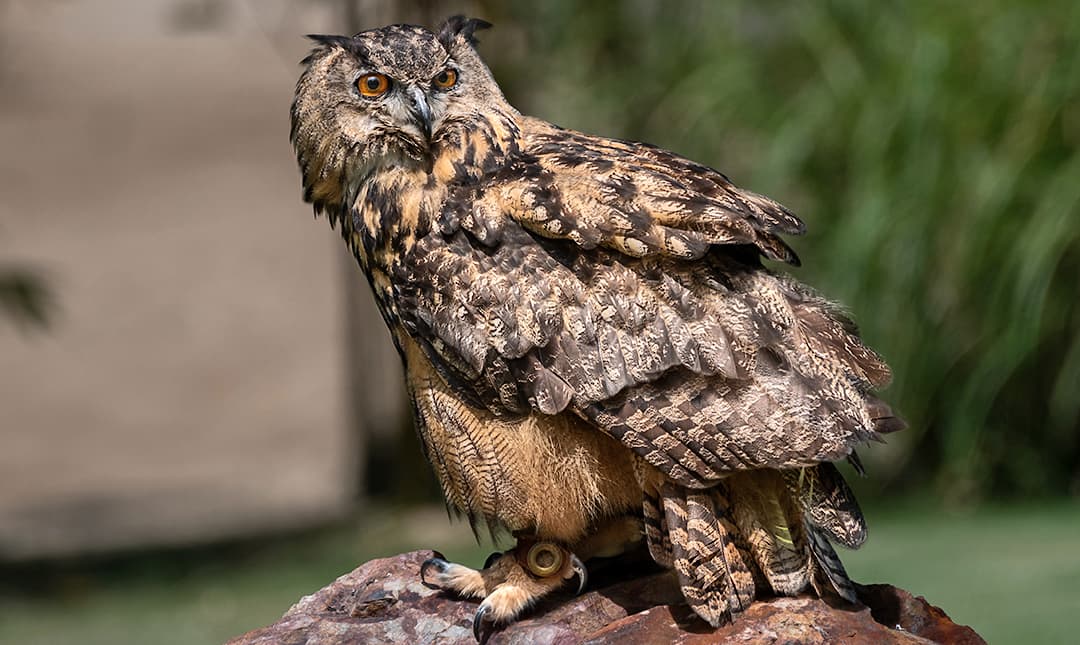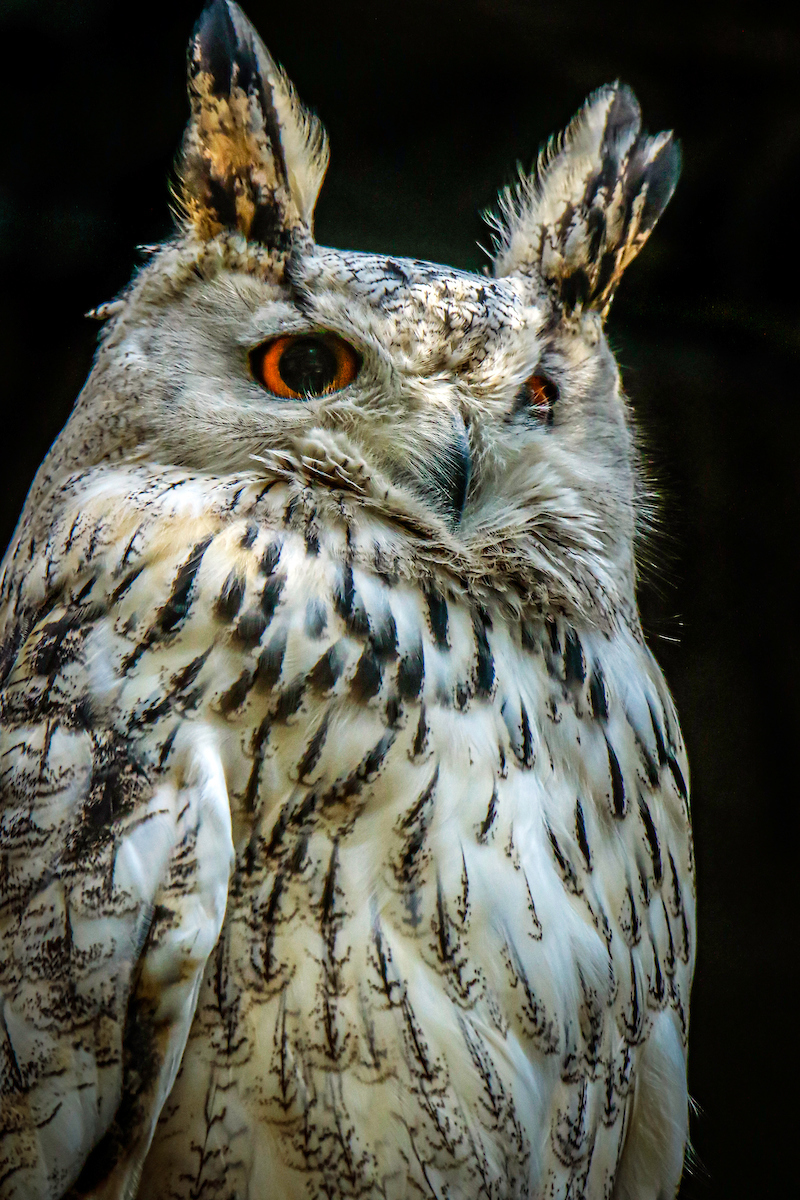About
These large owls rival some eagles in size. Eagle-owls are at the top of their food chain. They hunt at night using their acute hearing to locate prey. The feathers around the head and face form a disk that directs sound to their ears. Ears are placed higher on one side of the head and lower on the other side to allow the owl to pinpoint a prey’s exact location. Large orange eyes provide excellent night vision. Eagle-owls can rotate their heads almost 270 degrees to see behind their backs. They fly silently, with a downy fringe on their flight feathers that muffles any sound and allows them to detect the slightest squeak or rustle of leaves. They swoop down with their talons to catch birds in flight or mice on the ground.
Eagle-owls are very effective at controlling rodent populations. Like all owls, they cannot digest the hair, feathers, and bones of their prey, so these materials are coughed up in a compact pellet. The pellets allow scientists to study the birds’ diets. Despite their stealthy flying, eagle-owls are more often heard than seen; they communicate with a variety of loud hoots, whistles, barks, and beak snaps. During the day they roost high in trees, where their cryptic coloration enables them to blend in with the bark. Their long ear tufts are thought to provide camouflage by resembling broken branches. Ear tufts also indicate an owl’s mood: erect when they are alarmed or excited and lying flat when relaxed. Ear tufts do not enhance hearing. Eurasian eagle-owls are the world’s heaviest owls and have a huge range across most of Europe and Asia. One subspecies, called the Siberian eagle-owl, is lighter in color and found in the mountains of Russia and Kazakhstan.

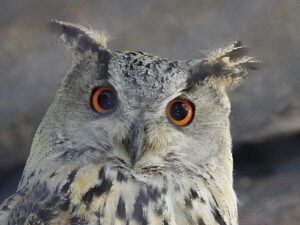

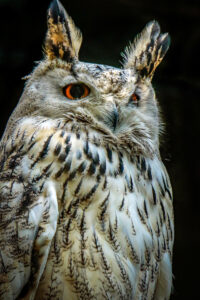
Habitat
Deserts, woodland hills, and rocky cliffs of Asia and Europe.
Diet
Carnivores. These raptors feed on rats, hares, mice, foxes, and even small deer.
Physical Characteristics
Eagle-owls are up to two and a half feet long and weigh three to ten pounds. Their wingspan is four and a half to six feet. Females are larger than males. Lifespan is up to 20 years in the wild. In human care they may live 60 years.
LOCATION WITHIN THE ZOO
You may see this species in the World of Birds Show.

